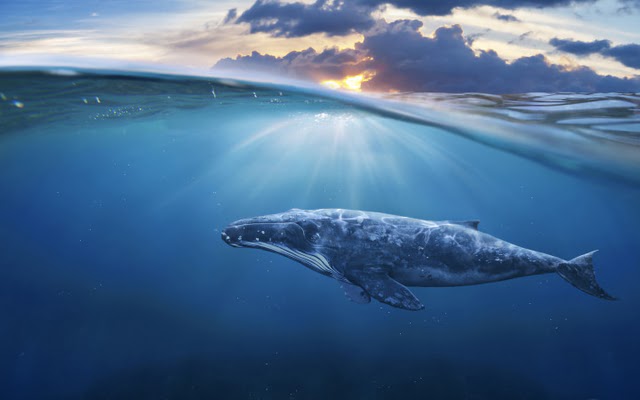
If you have a fascination for sea creatures, then whales are likely to captivate your interest. These magnificent swimmers never fail to astound us with their size and graceful movements. However, it is important to note that whales are different from other fish.
Contrary to popular belief, whales are not fish at all! As you may already know, whales belong to the category of mammals. Similar to dolphins and porpoises, whales are aquatic mammals that share several characteristics with other mammals, including humans.
For instance, all mammals are warm-blooded. They rely on oxygen from the air, give birth to live young, and possess hair. Although you may wonder whether whales truly have hair, you are not alone in your curiosity. Many individuals are unaware of the fact that whales do indeed have hair. After all, you do not come across a whale combing its hair, do you?
Considering the lack of fur on whales, you may be wondering where their hair is located. Have you ever had the opportunity to observe a whale up close? If so, you may have noticed that their skin appears smooth and devoid of hair.
Out of the more than 80 species of whales in existence, only a few possess visible hair. Although many whales have hair on their bodies before birth, it usually disappears shortly after delivery.
Some adult whales do exhibit visible hair. For instance, the humpback whale features unique bumps on its head known as tubercles, which are about the size of golf balls. These tubercles contain hair follicles.
Right whales have hair on their chins and upper jaws, while bowhead whales often possess hair on their lips, chins, snouts, and blowholes. However, experts assert that whales do not require hair for warmth, as they have blubber for that purpose. Instead, researchers believe that whale hair may serve other functions, such as sensory perception and communication of nursing needs to their young.
Nonetheless, hair is not the only factor that can contribute to bumpy skin in whales. Although their skin is typically smooth, it can become bumpy due to scratches from interactions with other marine animals during feeding.
Furthermore, marine parasites can also cause bumps and discoloration on whale skin. For instance, whale lice and barnacles are frequently found attached to their skin. Both of these organisms are skin parasites, with whale lice being related to skeleton shrimp, while barnacles are related to crabs and lobsters.
When whales come into contact with objects that remove these creatures, scars are often left behind on their skin. This is why some whales have a spotted or “mottled” appearance. As if these challenges were not enough, scientists now believe that whales can also experience sunburn. Due to ozone depletion, whales are exposed to harmful ultraviolet rays from the sun when they surface to breathe. This exposure leads to sunburn and other skin issues.
Whales truly are fascinating creatures, which explains why they have captivated the interest of people for such a long time. The next time you have the opportunity to observe a whale up close, whether it be at an aquarium or in the open ocean, take a moment to examine its skin. You may discover more about these incredible animals.
Try It Out
Continue your learning journey with the guidance of an adult and the activities provided below!
- Not only whales, but people also experience bumps and blemishes on their skin. How can you ensure that you are taking care of your skin? Get some advice from experts and create a poster or brochure to help other kids with their skincare. Make sure to include at least five skincare tips. Feeling creative? Add some pictures to make your product more visually appealing!
- If you want to learn more about whales, start by looking at this collection of pictures. Then, choose a specific type of whale to focus on. Make a list of questions and ask a friend or family member to help you find answers online or at the local library. Enjoy the process of researching and learning.
- Imagine that your family is enjoying a day out at sea. Suddenly, the boat starts to rock. You spot a whale emerging from the water’s surface nearby. What kind of whale is it? What happens next? Write a short story about your adventure and make sure to share it with a friend or family member once you’re done.
References
- http://en.wikipedia.org/wiki/Muktuk (accessed 17 July 2020)
- http://www.enchantedlearning.com/subjects/whales/species/Humpbackwhale.shtml (accessed 17 July 2020)
- http://marinelife.about.com/od/cetaceans/f/whaleshair.htm (accessed 17 July 2020)
- http://www.whalefacts.org/do-whales-have-hair/ (accessed 17 July 2020)
- http://en.wikipedia.org/wiki/Whale_louse (accessed 17 July 2020)
- http://www.kidsworldfun.com/amazing_facts_04.php (accessed 17 July 2020)
- http://www.marinebio.net/marinescience/05nekton/GWsouth.htm (accessed 17 July 2020)
- http://kidshealth.org/teen/your_body/take_care/skin_tips.html (accessed 17 July 2020)





Leave a Reply